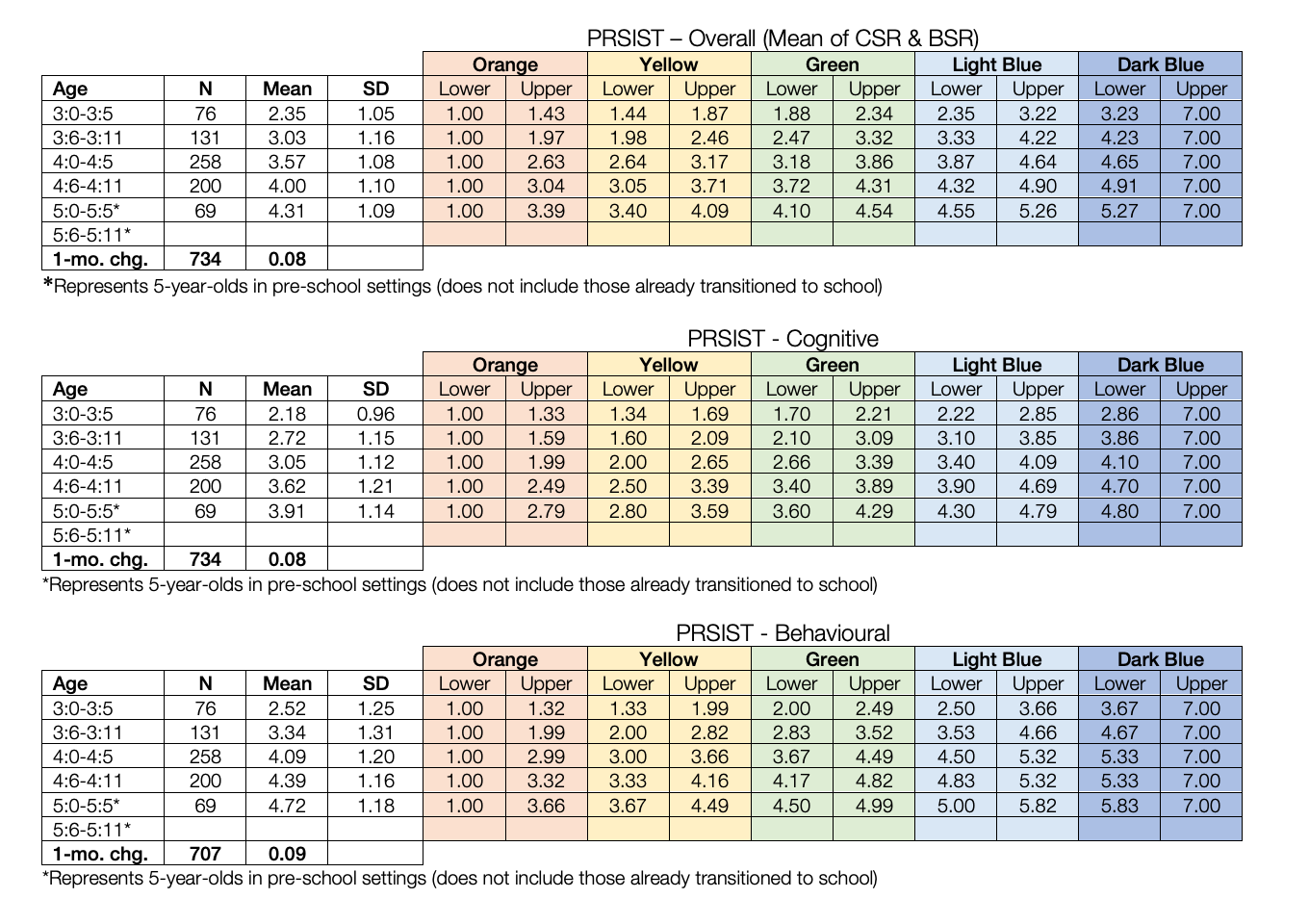
Interpreting Toolbox Data (Preliminary Norms)
Click on any of the EYT app names below to view its preliminary norms from a large sample of children with good representation of SES, gender, maternal education, age and Indigeneity. This sample was not a purposefully selected normative sample and norms will thus be updated as additional data are collected. However, this does not detract from one's ability to use the toolbox to yield good developmental sensitivity, or the ability compare (with the above caution in mind) results against these preliminary norms. A full report on the analytic sample and norms generated can be found in:
Howard, S. J., & Melhuish, E. (2015). An Early Years Toolbox (EYT) for assessing early executive function, language, self-regulation, and social development: Validity, reliability, and preliminary norms. Journal of Psychoeducational Assessment, 35(3), 255-275. 
In addition to means for 6-month age groups, we also situate scores into quintiles on the basis of these norms (Orange <20th; Yellow = 20th-39th; Green = 40th-59th; Light Blue = 60th-79th; Dark Blue = 80th+). A score within the middle three bands (yellow, green, light blue) can roughly be considered within age expectations (characterising the middle 60% of children that age). A score in the dark blue can be considered above age expectations (the top 20% of children that age). Scores in the orange can be considered as somewhat below age expectations (the bottom 20% of children that age). Note: Performance bands are based on preliminary norms derived from Australian children attending pre-school services and thus are only for indicative purposes.







